Today’s Current Affairs: 17th Nov 2023 for UPSC IAS exams, State PSC exams, SSC CGL, State SSC, RRB, Railways, Banking Exam & IBPS, etc
Table of Contents
MSCI Index:
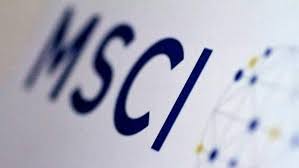
Global index provider MSCI has announced the inclusion of nine stocks in its MSCI Global Standard Index, effective as of the close of November 30, 2023.
- MSCI Index is owned by the multinational investment management and financial services company Morgan Stanley.
- It is an investment research firm that provides stock indexes, portfolio risk and performance analytics, and governance tools to institutional investors and hedge funds.
- It is a leading provider of critical decision support tools, including stock indexes, and services for the global investment community.
- MSCI indices facilitate the construction and monitoring of portfolios in a cohesive and complete manner, avoiding benchmark misfits.
- It has over 160,000 indices in its portfolio.
- MSCI has indexes for countries, regions, emerging markets, developed markets, small-cap, all cap and even Islamic indexes.
- It selects stocks for its equity indexes that are easily traded and have high liquidity, with companies having high free float getting more weightage.
- It prefers stocks that have active investor participation and are without owner restrictions.
MSCI India Index:
- It is designed to measure the performance of the large and mid-cap segments of the Indian market.
Crab Nebula : New Image

NASA’s James Webb Space Telescope (JWST) has captured new views of a stunning nebula, the Crab Nebula.
- NASA released a new image of the Crab Nebula, clearly showing a small white dot at its centre.
- Crab Nebula is a supernova remnant located 6,500 light-years away.
- It is located in the constellation Taurus.
- A nebula is a formation in space which is constituted mostly of helium, dust, and other gases in various concentrations.
- The shape and size of a nebula vary, and as such there can be various types of formations having different sizes.
- The Crab Nebula has continued to draw attention and additional study as scientists seek to understand the conditions, behaviour, and after-effects of supernovae through a thorough study of the Crab, a relatively nearby example.
- The discovery of the object as a nebula is attributed to the English physician and amateur astronomer John Bevis in about 1731.
- It is one of the few astronomical objects from which radiation has been detected over the entire measurable spectrum, from radio waves through infrared and visible wavelengths to ultraviolet, X-rays, and gamma rays.
National Press Day 2023:
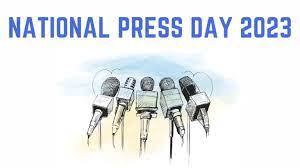
The day is observed on 16th November every year to commemorate a free and responsible press.
- It is observed in honour of the Press Council of India (PCI).
- Press Council of India (PCI) was established by the Parliament On 4 July 1966.
- The day is meant to mark the presence of the free and responsible press in India.
- In the year 1956, the First Press Commission decided to form a body bestowed with statutory authority, meant to fulfill the responsibility of maintaining the ethics of journalism.
- The National Press Day has been celebrated ever since on 16th November, every year to commemorate the establishment of the council.
- Various seminars and workshops are organized to raise multiple issues faced by the Indian press.
Electric Battery:
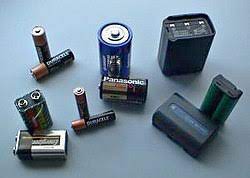
The electric battery serves as a portable source of electric power, playing a fundamental role in convenience and sustainability.
- The first real battery was invented by Alessandro Volta in 1800. In the early 19th century, Michael Faraday worked out why these cells worked the way they did and named their various components (anode, cathode, electrolyte, etc.
- Electric batteries work by converting stored chemical energy into electrical energy.
- Anode (Negatively Charged Electrode): Oxidation occurs, releasing electrons and creating ions.
- Cathode (Positively Charged Electrode): Reduction takes place, consuming electrons and accepting ions.
- Electron Flow: Electrons generated at the anode flow through an external circuit to the cathode, creating an electric current.
- Salt Bridge (electrolyte): A salt bridge connects the two half-cells, allowing ion exchange to maintain electrical neutrality.
Annapurna Certificate Programme:

The Annapurna Certificate Programme, an initiative by the Indian Council for Cultural Relations (ICCR), has recognized six Indian restaurants worldwide for promoting Indian culinary traditions.
- This annual program acknowledges restaurants contributing to India’s cultural cause through cuisine on a global scale.
- The Indian Council for Cultural Relations (founded 1950; HQ: New Delhi; founder: Maulana Azad).
- It is an autonomous organisation of the Government of India.
- It is involved in India’s global cultural relations, through cultural exchange with other countries and their people.
6th India-OPEC Energy Dialogue:
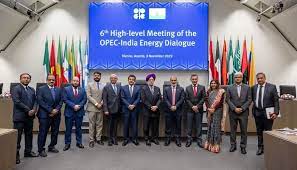
The 6th High-Level Meeting of the India-Organization of the Petroleum Exporting Countries (OPEC) Energy Dialogue brought together key representatives at the OPEC Secretariat in Vienna, Austria.
- The meeting delved into critical aspects of oil and energy markets.
Key Highlights :
- The Meeting focused on key issues related to oil and energy markets with a specific emphasis on ensuring availability, affordability and sustainability, which are necessary to ensure the stability of energy markets.
- The meeting concluded with both parties underscoring the importance of fostering enhanced cooperation between OPEC and India moving forward.
- World Oil Outlook 2023, which forecasted that India would be the fastest-growing major developing economy, averaging long-term growth of 6.1% between 2022-2045 and accounting for over 28% of incremental global energy demand during the same period.
- Both sides have recognized the importance of India as the third-largest energy consumer, crude oil importer and the fourth-largest global refiner, in global economic growth and energy demand.
- The meeting also acknowledged the achievements and initiatives of India in the fields of renewable energy, energy efficiency, hydrogen economy, and climate change mitigation.
- It was agreed to hold the next High-Level Meeting of the India-OPEC Energy Dialogue in 2024 in India.
Organization of the Petroleum Exporting Countries (OPEC):
- The OPEC is a permanent, intergovernmental Organization, created at the Baghdad Conference in 1960, by Iran, Iraq, Kuwait, Saudi Arabia and Venezuela.
- It is headquartered in Vienna, Austria.
- OPEC’s objective is to coordinate and unify petroleum policies among Member Countries, to secure fair and stable prices for petroleum producers; an efficient, economic and regular supply of petroleum to consuming nations; and a fair return on capital to those investing in the industry.
- Members: Algeria, Angola, Congo, Equatorial Guinea, Gabon, Iran, Iraq, Kuwait, Libya, Nigeria, Saudi Arabia, United Arab Emirates and Venezuela.
National Health Claim Exchange:

The National Health Authority (NHA) and the Insurance Regulatory and Development Authority of India (IRDAI) have joined hands to operationalize the National Health Claim Exchange (NHCX).
- National Health Claim Exchange (NHCX) is a digital health claims platform developed by the National Health Authority.
- It will serve as a gateway for exchanging claims-related information among various stakeholders in the healthcare and health insurance ecosystem.
- It is designed to be interoperable, machine-readable, auditable and verifiable, as well as help ensure the information exchanged is accurate and trustworthy.
National Health Authority (NHA):
- It is the apex body responsible for implementing Ayushman Bharat Pradhan Mantri Jan Arogya Yojana (AB PM-JAY).
- It has been entrusted with the role of designing strategy, building technological infrastructure and implementation of “National Digital Health Mission” to create a National Digital Health Eco-system.
- It is the successor of the National Health Agency, which was functioning as a registered society. According to the Cabinet decision for full functional autonomy, the National Health Agency was reconstituted as the National Health Authority in January 2019.
- It is an attached office of the Ministry of Health and Family Welfare with full functional autonomy.
- It is governed by a Governing Board chaired by the Union Minister for Health and Family Welfare.
India International Science Festival:
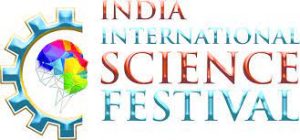
The 9th edition of the India International Science Festival (IISF) 2023 will be held at Faridabad, Haryana from January 17th-20th, 2024.
- India International Science Festival will be held at the Campus of Translational Health Science and Technology Institute (THSTI) and Regional Centre for Biotechnology (RCB) of the Department of Biotechnology in Faridabad.
- Theme: ‘Science and Technology Public Outreach in Amrit Kaal’.
- IISF 2023 aims to provide a platform for inspiring the public at large and individuals with diverse levels of interests, like students, educators, scientists, researchers, industry professionals, entrepreneurs, and science communicators.
- IISF 2023 will have a total of 17 themes to showcase scientific achievements, offering diverse benefits to participants and the general public.
- The IISF is dedicated to fostering creativity in Science, Technology and Innovation for the advancement of prosperous India.
- It is an initiative of the Ministry of Science and Technology and the Ministry of Earth Sciences in association with Vijnana Bharati.
- Since 2015, the IISF has hosted eight editions in different geographical regions of India and expanded as a mega science festival.
- In 2021, the Department of Space and the Department of Atomic Energy became an integral part of IISF.
Mars Solar Conjunction:
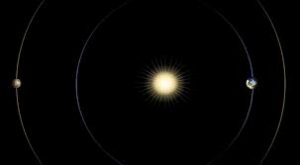
NASA announced that it will stop sending commands to its fleet of robotic probes on or orbiting the red planet Mars due to Mars solar conjunction.
- Mars solar conjunction is a phenomenon which occurs when the Sun is between Earth and Mars.
- It happens once every two years.
- During this time, Sun expels hot, ionised gas from its corona.
- It could corrupt radio signals sent from Earth to Mars.
- Also, this could cause unexpected behaviour from the spacecraft on Mars.
- This year, it is occurring between November 11 and November 25
- Mars is the fourth planet in the solar system in order of distance from the Sun and seventh in size and mass.
- It is a periodically conspicuous reddish object in the night sky.
- The planet’s two moons, Phobos (Greek: “Fear”) and Deimos (“Terror”).
Kavro Doma 360:
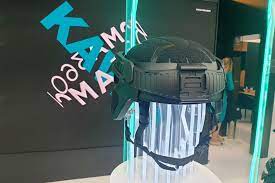
Kanpur-based MKU Limited recently unveiled the Kavro Doma 360 at Milipol Paris.
- Kavro Doma 360 is the world-first rifle-rated ballistic helmet.
- It was indigenously developed by Kanpur-based MKU Limited.
- The world’s first uniform rifle protection helmet: It offers uniform protection in all 5 zones of the head (front, back, left, right, and crown) against threats like the AK-47 MSC, M80 NATO BALL, and M193 rifle bullets.
- The only boltless rifle protection helmet to date:
- It’s the first anti-rifle helmet in the world that does not have bolts or any metal parts.
- When a helmet is bolted, the risk of the bolt penetrating the skull on impact is higher due to weakened areas.
- Furthermore, there are no rifle-rated bolts at the moment.
- It has a boltless shell, which means it provides 40% more protection area against even AK-47 assault rifles than standard helmets.
Sagar Kavach : Coastal Security Exercise

The coastal security exercise ‘Sagar Kavach’ is set to unfold its strategic manoeuvres along the Kerala and Mahe coasts.
- The exercise, conducted semi-annually, is a collaborative effort with active participation from various central and state agencies, showcasing a unified approach to fortifying India’s coastal defences.
- Coordinated by the Indian Coast Guard, ‘Sagar Kavach’ brings together an amalgamation of forces, including the Indian Navy, Coastal Police/State Police, Intelligence Bureau, Customs, CISF, Department of Port, Department of Fisheries, Directorate General of Lighthouse and Lightships (DGLL), and Kadalora Jagiratha Samithi.
- The exercise is designed to address the unique complexities of the coastal terrain, ensuring that security mechanisms are robust and adaptive to various scenarios.
- Strategic Division: Attack vs. Defence Forces
- The participating units in the exercise are strategically divided into two teams: Attack (Red) and Defence (Blue) forces.
- The Red Forces simulate infiltration attempts into coastal areas from seaward, challenging the coastal defences.
- In contrast, the Blue Forces counteract these simulated threats by establishing Coastal Security Surveillance to intercept and neutralise any infiltration attempts.
- Recognising the pivotal role of fishermen in coastal security, the exercise emphasizes the need for their active involvement.
- Fishermen are urged to promptly report any unknown vessels operating in proximity to the coast to the Indian Coast Guard.
- This collaborative approach aims to enhance the eyes and ears along the coastal region, turning the local fishing community into a valuable asset for security.
Nirbhay Cruise Missile:

The Indian armed forces will be inducting the long-range attack cruise missile Nirbhay into their inventory to strike targets at ranges over 1,000 km.
- Nirbhay Cruise Missile is a long-range sub-sonic cruise missile.
- It is India’s first indigenously-produced cruise missile.
- The missile was developed by the Bengaluru-based Aeronautical Development Establishment, a lab under India’s Defence Research and Development Organisation (DRDO).
- It is capable of deep penetration into adversary territory to strike high-value targets with precision.
- The Nirbhay measures 6.0 m in length, 0.5 m in body diameter, and weighs 1,500-1,600 kg at launch.
- It can strike land targets at a distance of up to 1,000 kilometres.
- It uses a solid propellant booster motor that is jettisoned shortly after launch, switching over to a turbojet engine.
- It is capable of loitering and cruising at Mach 0.7 (sub-sonic) at altitudes as low as 100 metres.
- It can be armed with a 200-300 kilogram warhead. It can carry both conventional and nuclear warheads.
- It can be launched from multiple platforms.
- It is guided by INS/GPS with an active-radar terminal seeker.




